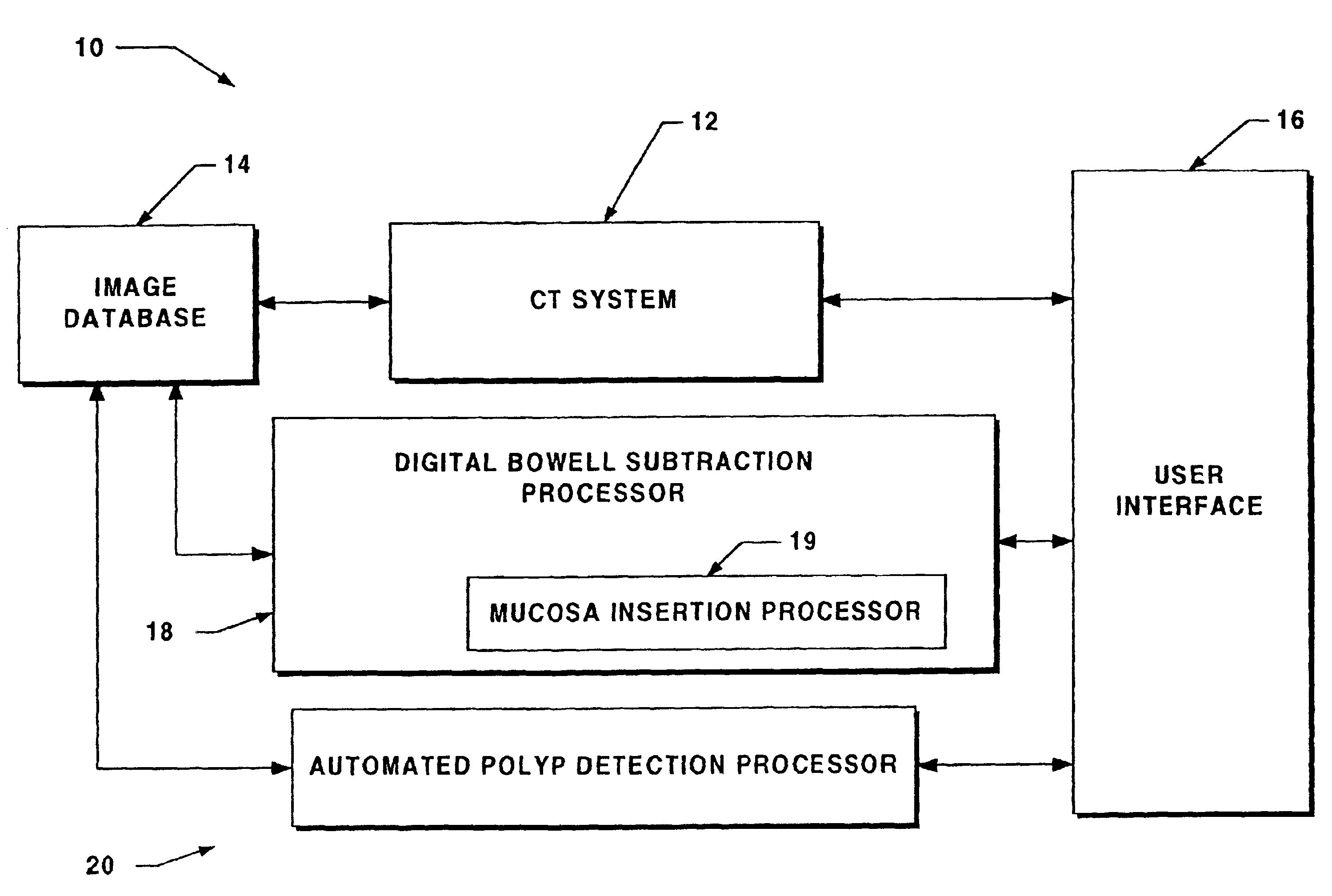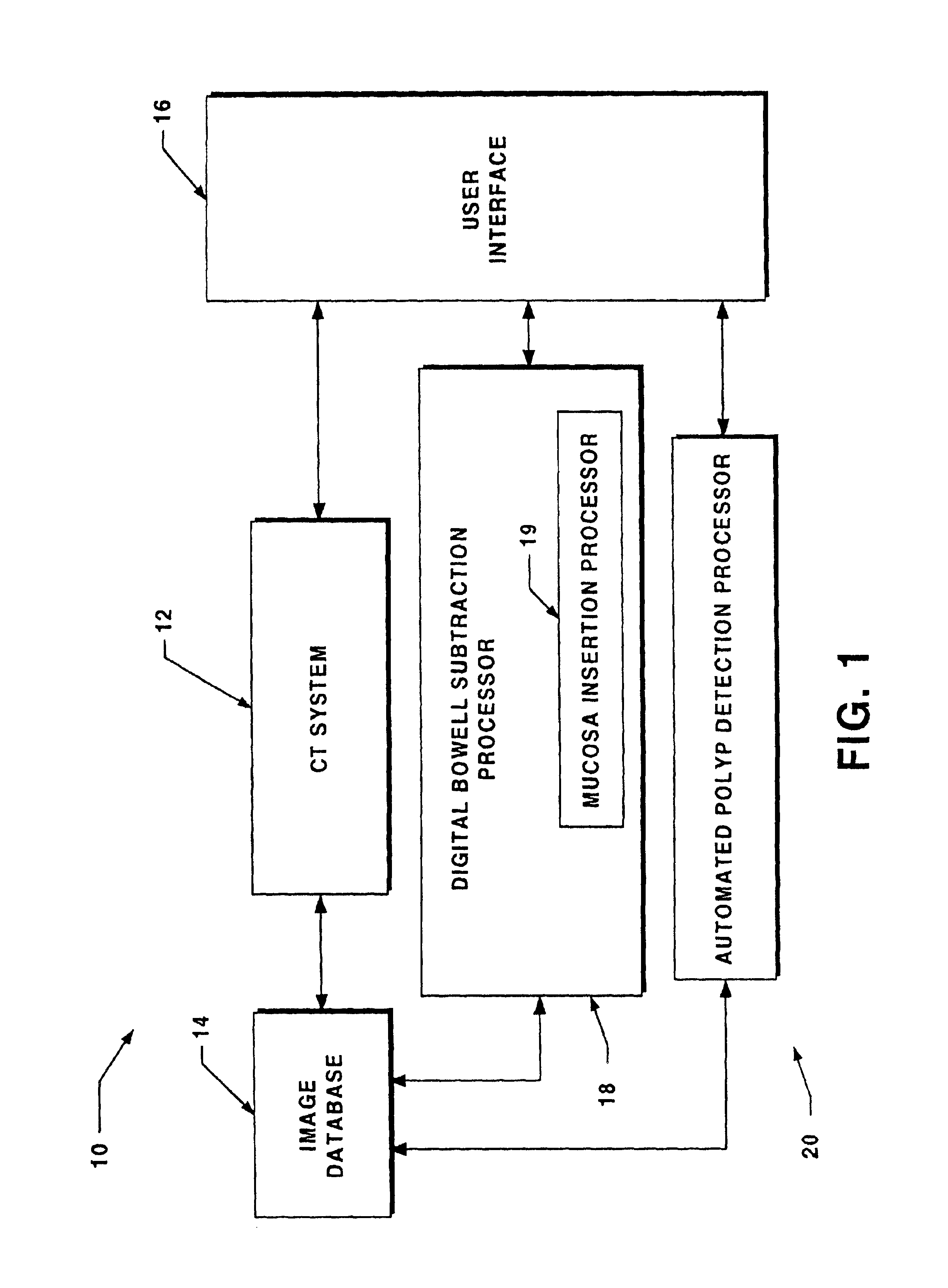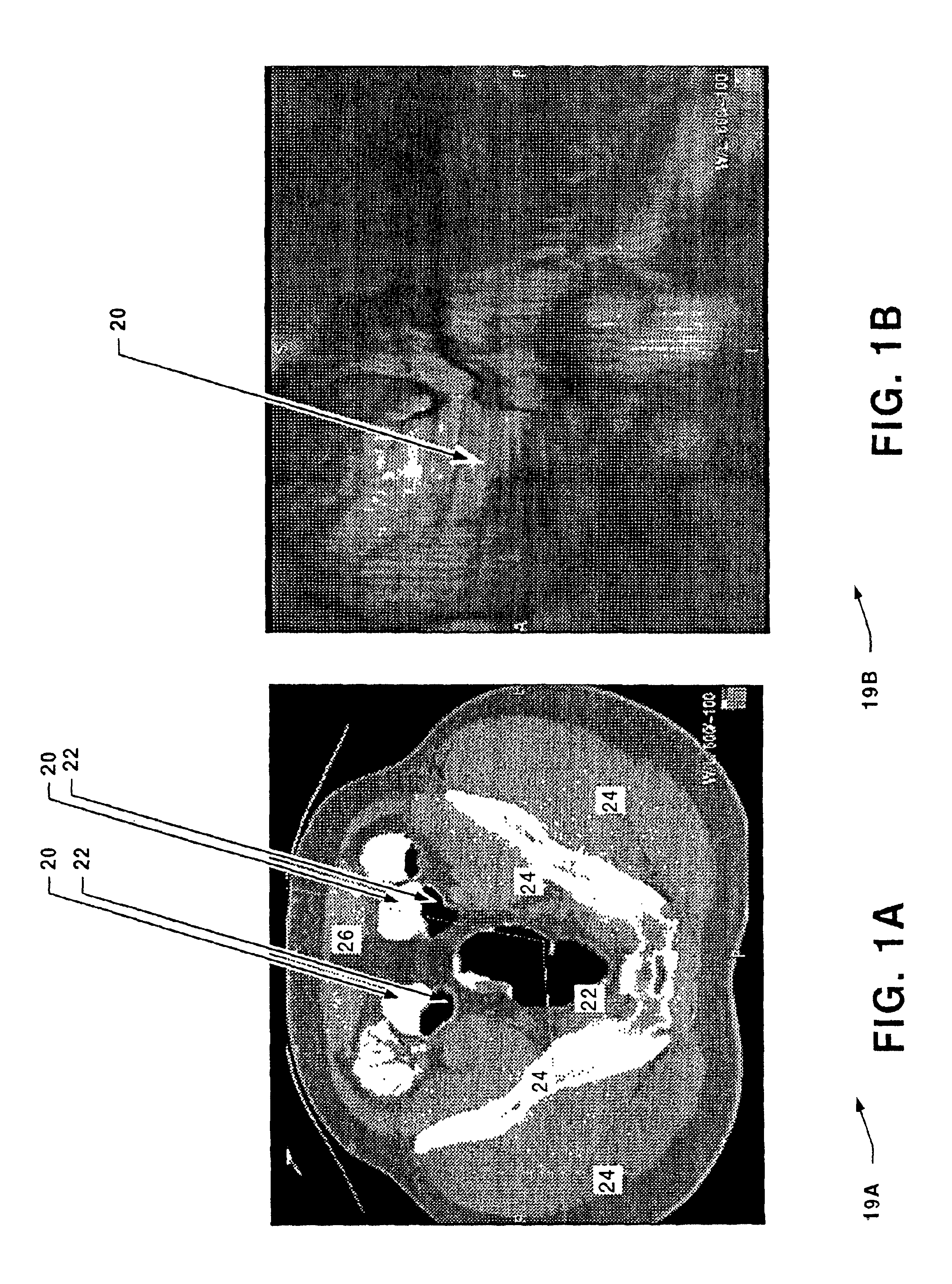System for digital bowel subtraction and polyp detection and related techniques
a digital bowel and polyp detection technology, applied in the field of colonoscopy techniques, can solve the problems of significant colon injury risk, time-consuming, expensive, etc., and achieve the effect of reducing the risk of colon injury
- Summary
- Abstract
- Description
- Claims
- Application Information
AI Technical Summary
Benefits of technology
Problems solved by technology
Method used
Image
Examples
Embodiment Construction
[0035]Before describing a virtual colonoscopy system which includes a digital bowel subtraction processor (DBSP) and / or automated polyp detection processor (APDP) and the operations performed to digital cleanse a bowel and automatically detect a polyp, some introductory concepts and terminology are explained.
[0036]A computed tomography (CT) system generates signals which can be stored as a matrix of digital values in a storage device of a computer or other digital processing device. As described herein, the CT image is divided into a two-dimensional array of pixels, each represented by a digital word. One of ordinary skill in the art will recognize that the techniques described herein are applicable to various sizes and shapes of arrays. The two-dimensional array of pixels can be combined to form a three-dimensional array of pixels. The value of each digital word corresponds to the intensity of the image at that pixel. Techniques for displaying images represented in such a fashion, ...
PUM
 Login to View More
Login to View More Abstract
Description
Claims
Application Information
 Login to View More
Login to View More - R&D
- Intellectual Property
- Life Sciences
- Materials
- Tech Scout
- Unparalleled Data Quality
- Higher Quality Content
- 60% Fewer Hallucinations
Browse by: Latest US Patents, China's latest patents, Technical Efficacy Thesaurus, Application Domain, Technology Topic, Popular Technical Reports.
© 2025 PatSnap. All rights reserved.Legal|Privacy policy|Modern Slavery Act Transparency Statement|Sitemap|About US| Contact US: help@patsnap.com



